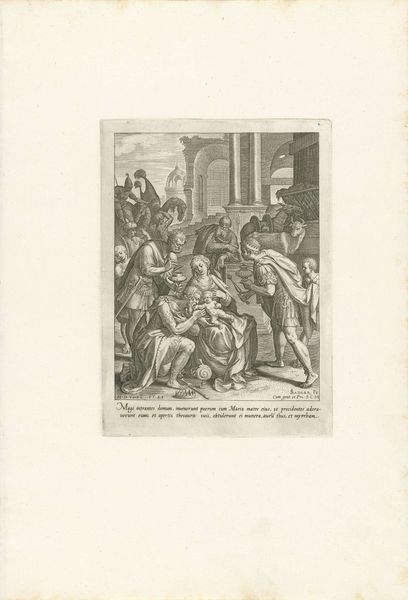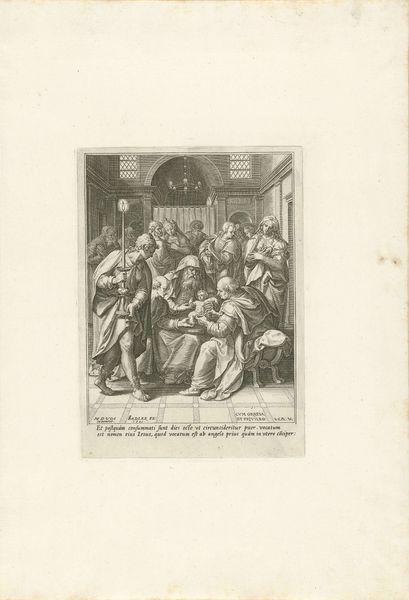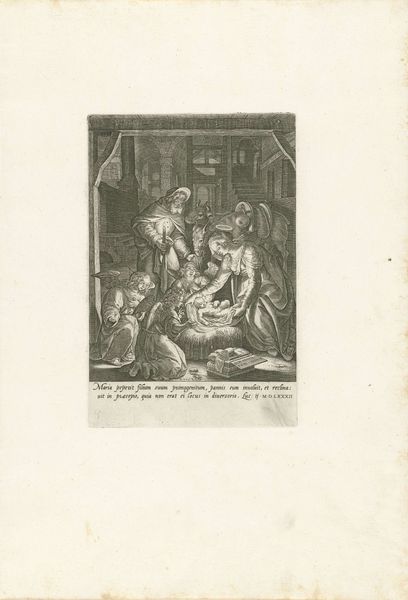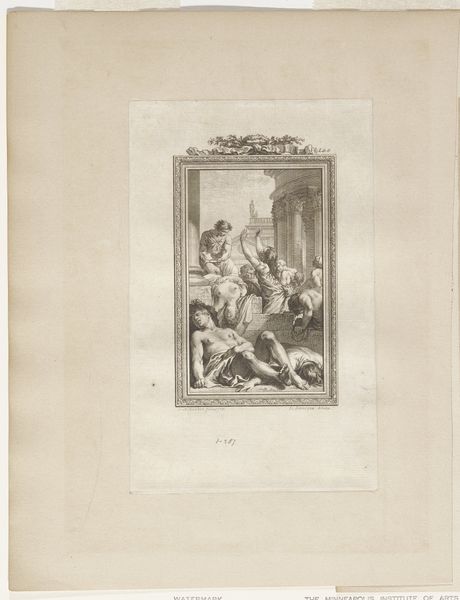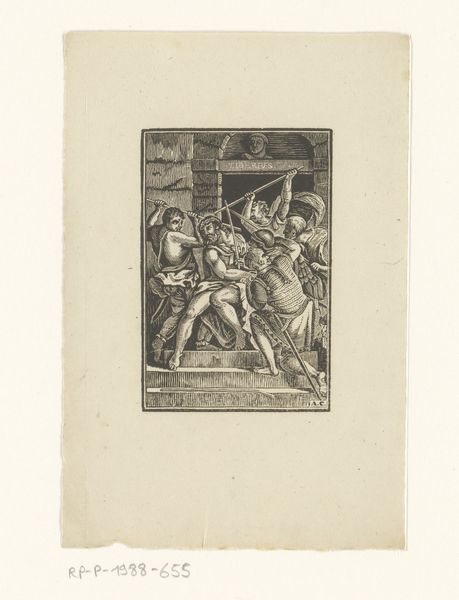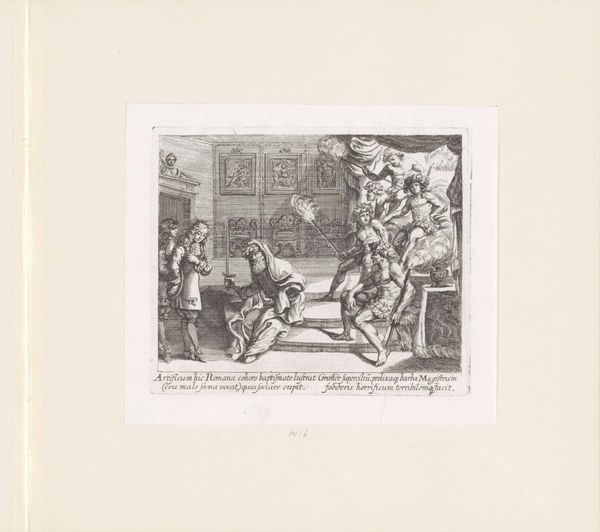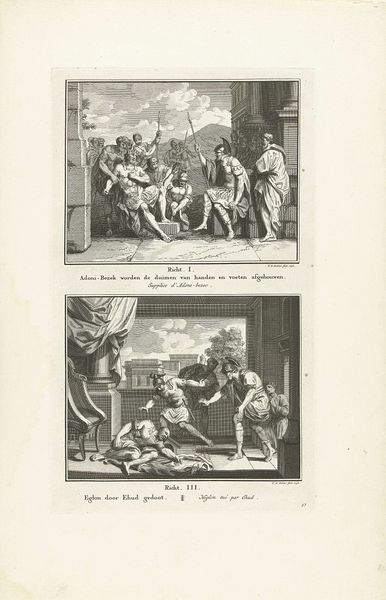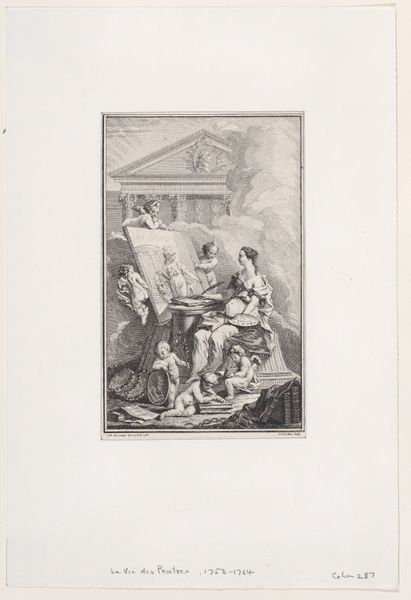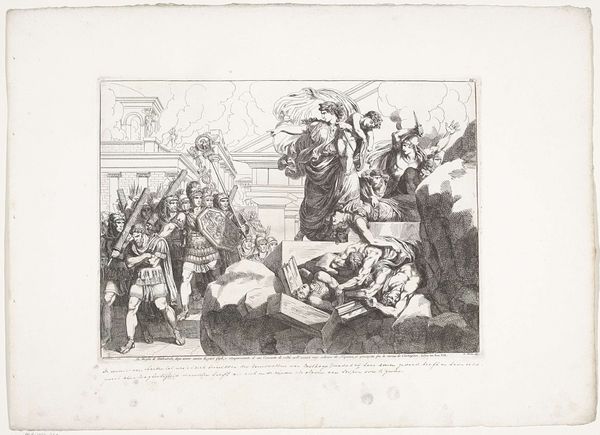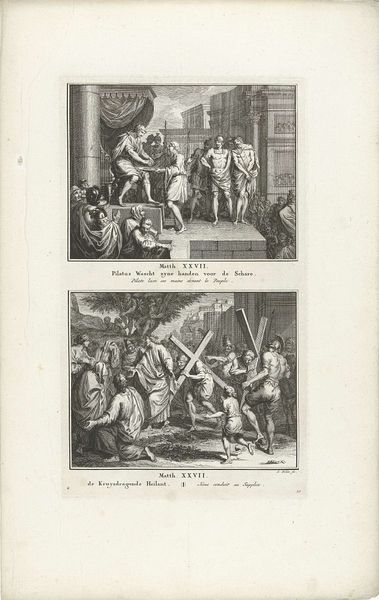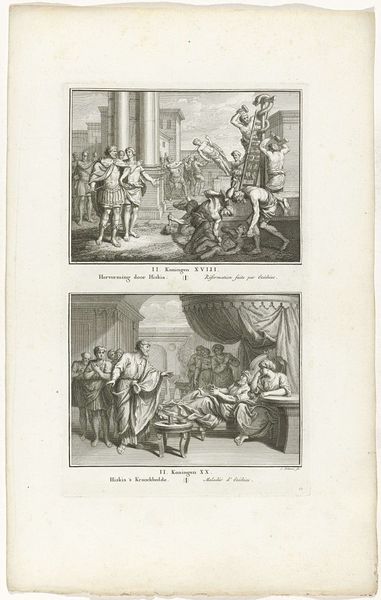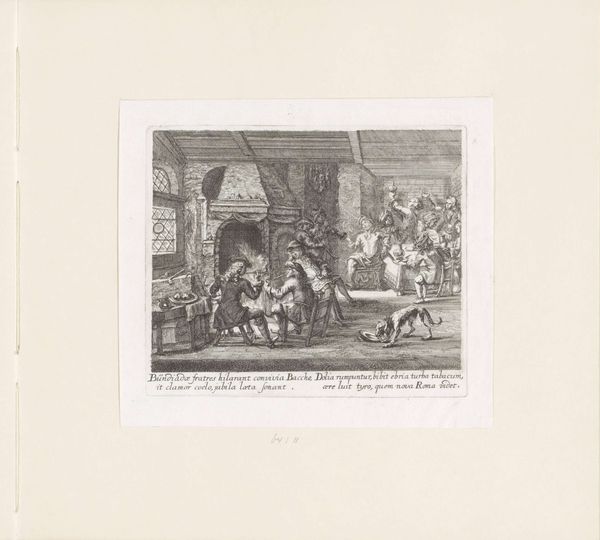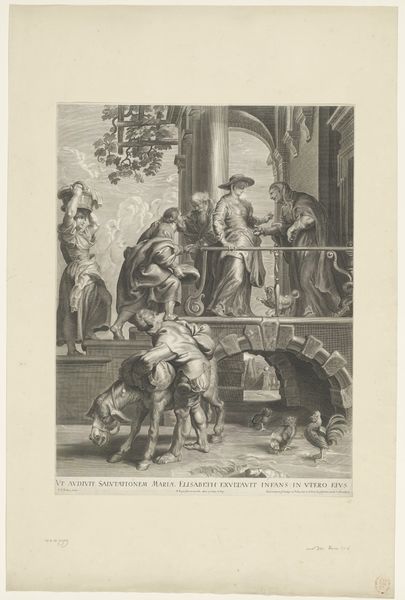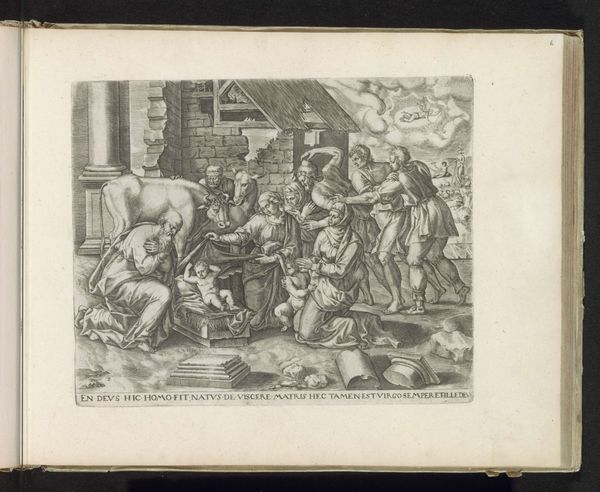
print, engraving
# print
#
old engraving style
#
figuration
#
history-painting
#
northern-renaissance
#
engraving
Dimensions: height 193 mm, width 133 mm
Copyright: Rijks Museum: Open Domain
Editor: Here we have Johann Sadeler's 1581 engraving, "Heilige Familie in Egypte," or "The Holy Family in Egypt." It is incredibly detailed! There's a domestic scene, but the architectural perspective and figures within the artwork give it this interesting depth... What catches your eye? How do you approach analyzing something so intricate? Curator: It is indeed, rich in detail. Notice the density of line work, a hallmark of engraving, and how it defines form and space. The artist's control of the burin to create varying tonal values is remarkable. Semiotically, the architecture serves as a structuring device, creating planes within the image that divide and unite the space, almost like a stage. What do you make of the varying textures achieved purely through line? Editor: Well, the way the lines are so close together, or further apart really help to distinguish between textures. For instance, there are defined textures between the clothing, the walls, or even the ground and figures themselves. They also enhance the form... but there's a narrative being conveyed through all this, right? How would you relate that to the architecture of it all? Curator: Narrative, certainly, is implicit, but it is accessed via the compositional elements. Consider the orthogonal lines receding into space, meeting at a vanishing point beyond the central figures. This directs the eye, yes, but more importantly it establishes a visual hierarchy. The Holy Family becomes the nexus of all structural lines, affirming their centrality within the image's symbolic order. So it asks questions not just of representation but of the inherent structural framework dictating our reading. Does that reframe the 'story' for you? Editor: Yes, that makes a lot of sense. I had thought the details of the domestic setting provided that contextual depth, but you’re saying that the very architecture and linear framework draw attention back to the Holy Family! Thanks! Curator: Precisely! The architecture serves as both setting and symbolic structure, subtly guiding our interpretation of the subject. I'm pleased we've reached a new plane in this art, thanks to you.
Comments
No comments
Be the first to comment and join the conversation on the ultimate creative platform.
